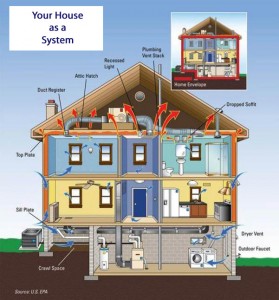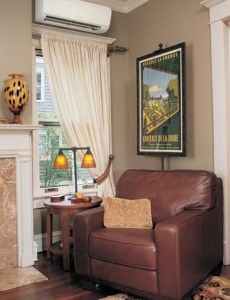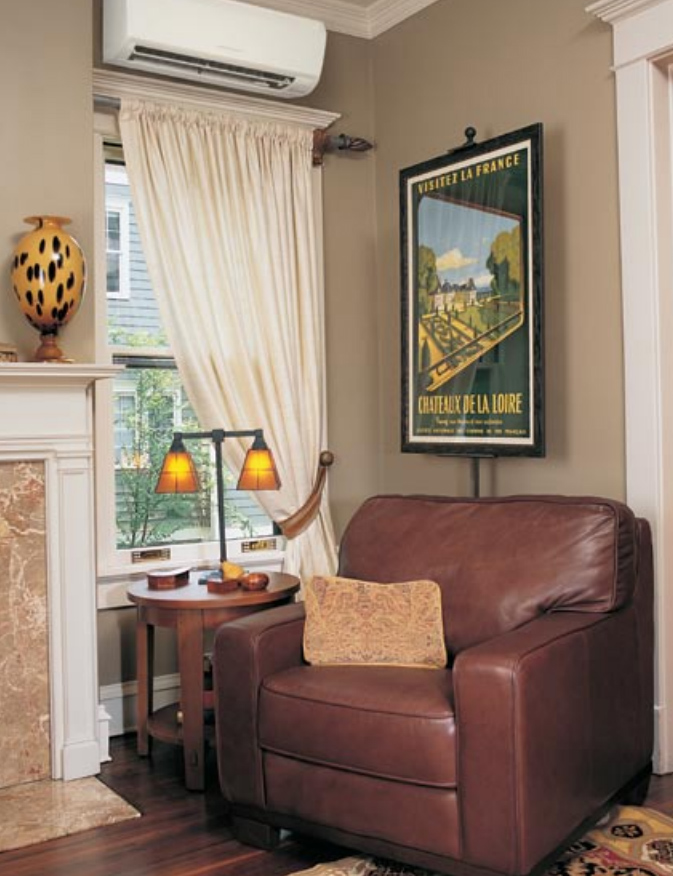 The “building envelope” sounds technical, but it simply refers to the barrier between the outside environment and the inside of your home – the walls, floor, roof, and any pipes or ducts that carry heated air or water. Maintaining building-envelope integrity ensures protection from the outside elements, reduces heat transfer from inside to outside, and provides ideal comfort inside. In other words, a good building envelope serves as an adequate water barrier, air barrier, and a thermal barrier.
The “building envelope” sounds technical, but it simply refers to the barrier between the outside environment and the inside of your home – the walls, floor, roof, and any pipes or ducts that carry heated air or water. Maintaining building-envelope integrity ensures protection from the outside elements, reduces heat transfer from inside to outside, and provides ideal comfort inside. In other words, a good building envelope serves as an adequate water barrier, air barrier, and a thermal barrier.
Energy Efficiency First recommends a step-wise approach to making sure the integrity of the building envelope is maintained.
Inspecting and maintaining the outer surfaces is important because it serves as your first line of defense against water intrusion. The home must shed moisture to prevent building components from being damaged over time by moisture. A good roof with correctly installed flashing and proper gutters and drainage will shed water away from your home and not into the attic, foundation and crawl space. Properly flashed windows will also prevent moisture damage to walls. Routinely inspecting plumbing and appliances to assure they are not leaking into walls, floors, or ceilings is also a good idea.
The building envelope must also breathe properly and allow vapor to escape so that excess moisture does not become trapped inside. Breathability is a complex issue that can pertain to wall-assembly-construction methods. For example, some builders, 30 years ago, constructed wall assemblies for maximum energy efficiency. But the walls could not breathe and the wood inside has decayed. When identified, these should be repaired.
 The breathability of a home also can pertain to appropriate crawl space and attic ventilation. Foundations and low building members must be protected from improper water drainage and moisture. If moisture is building up in your home due to inadequate ventilation or drainage, it can easily collect in the attic and cause mold and decay that can become costly to your wallet and health.
The breathability of a home also can pertain to appropriate crawl space and attic ventilation. Foundations and low building members must be protected from improper water drainage and moisture. If moisture is building up in your home due to inadequate ventilation or drainage, it can easily collect in the attic and cause mold and decay that can become costly to your wallet and health.
The floor, attic, and walls, windows, doors, HVAC ducts, and water pipes must be properly air sealed and insulated to prevent unwanted air infiltration and heat transfer. Air sealing should come first, followed by properly insulating the floor, walls, and attic.
In addition, the HVAC ductwork is a major source of concern when assessing a home’s efficiency. Ducts are typically metal sections connected together to allow heated or cooled air to distribute throughout your home. Anything joined in sections will have cracks and ducts are notorious for leaking. In fact, the average home loses 30% of the air they pay to heat through leaks in duct work. EEF can address the problem of leady ducts in three main ways. The first is applying mastic, or a liquid sealer, to all the joints in your ductwork so they do not leak air. Second, EEF ensures all ducts are properly insulated. The third option is to install ductless heat pumps in your home, eliminating the need for ducts at all, thus eliminating loss of thermal energy through those ducts.
For more information about building durability and maintaining the integrity of your home’s building envelope, contact Energy Efficiency First at 360-239-9684 or visit them online.




















































